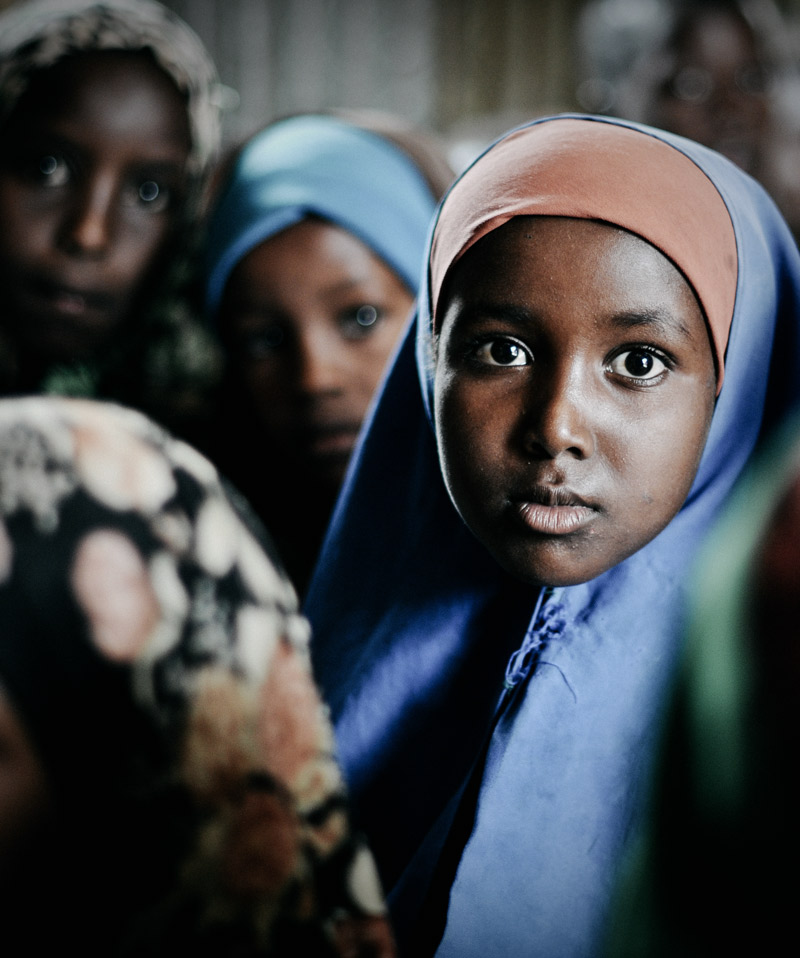sustaining the practice
FGM is a complex multifaceted practice deeply rooted in a strong cultural and social framework.
The beliefs sustaining the practice of FGM vary greatly from one ethnic group to another, although there are many common themes. Some of the most common beliefs, are outlined in the following sections.
Sexuality
In societies where virginity is an absolute pre-requisite for marriage and where any type of promiscuity or extramarital relationship may lead to the most severe penalties, FGM is believed to safeguard the morality of women, preserve their virginity, prevent them from being oversexed, and save them from temptation and disgrace. In times of war FGM is also thought to protect women from rape.
FGM is also believed by some to promote fertility and increase a man’s sexual pleasure, both of which enhance a woman’s attractiveness in marriage.
The Position of Women and Marriage
Many societies practising FGM are also patrilineal, whereby a woman represents and retains her father’s lineage and her marriage is not only a union of two people, but an alliance of two lineages. This alliance strengthens clans and clan relationships with other groups and a woman who has not undergone FGM brings great shame and dishonour to her father’s lineage. FGM is therefore vital not only to a husband as proof of his future bride’s virginity – but also to the bride’s family or lineage.
Traditional Myths and Beliefs
- in areas where infant mortality is high and fertility so important, FGM is promoted as a pre-requisite for the cleanliness of a woman and the good health of her baby. (In practice however, infibulation has the opposite effect, compromising hygiene and causing an increased risk of infection, infertility, health complications and childbearing difficulties.),
- the Dogon and the Bambara of Mali, and the Mosi of Burkina Faso believe that the clitoris is dangerous during childbirth and can cause death when in contact with the baby’s head,
- amongst some communities the clitoris is thought to produce an offensive discharge and exude a foul odour,
- in some areas of Ethiopia, there is the belief that if the female genitals are not excised they will grow and dangle between the legs like a man,
- the Tagouna of the Ivory Coast believe that an unexcised woman cannot conceive,
- in some countries such as Somalia, the external female genitals are considered dirty, ugly, and disfiguring. Infibulation is believed to produce a clean smooth skin surface that is desirable to touch,
- in some cultures it is believed that the clitoris is a masculine feature which must be removed to create true femininity in women. Women who have not undergone FGM are believed to have characteristics thought to be only appropriate for men, such as sexual desire and promiscuity.
The Role of Men
In the Horn of Africa, FGM is also considered to play a significant role in men’s sexuality. A narrowed vaginal opening is believed to enhance a husband’s sexual pleasure and the challenge of penetrating a tight opening is considered to be linked to a man’s virility. A man will commonly refuse to marry an uncircumcised woman, and in some cultures women may request to be reinfibulated after childbirth for fear that they will not satisfy their husband, or that he may take another younger “tighter” wife.
In some societies where a man has several wives, it is also said that since it is physically impossible for him to satisfy them all, FGM helps by making the wives less sexually demanding.



Social Pressure
However, the ceremonial aspects of FGM are noted to be falling away with urbanisation, and with FGM being performed at a much younger age it is having much less to do with entry into adulthood – undermining the hypothesis that it is an initiation rite.
Whether the practice is shrouded in rituals and celebrations, or whether it involves a visit to the local midwife, FGM is an integral part of a girl’s social development. The practice is deeply embedded in the social norms of the community and there is immense social pressure on all young girls to conform. A girl who does not undergo FGM is likely to be severely socially penalised, and is often despised, taunted, ostracised and made the target of ridicule. No one in her community may want to marry her, and what is clearly understood to be her life’s work – marriage and childbearing – will be denied her.
For a woman living in a patriarchal society with no access to land or education and no effective power base, marriage is her main means of survival and access to resources – and FGM is her pre-requisite for marriage. With the beliefs surrounding FGM deeply embedded from childhood, the social approval associated with FGM and the sanctions women face if they don’t undergo FGM – the benefits of FGM would seem to outweigh the physical difficulties. FGM is inevitably viewed in a very positive light and this can explain why women continue to cling to the tradition, colluding in their own daughters’ circumcision.